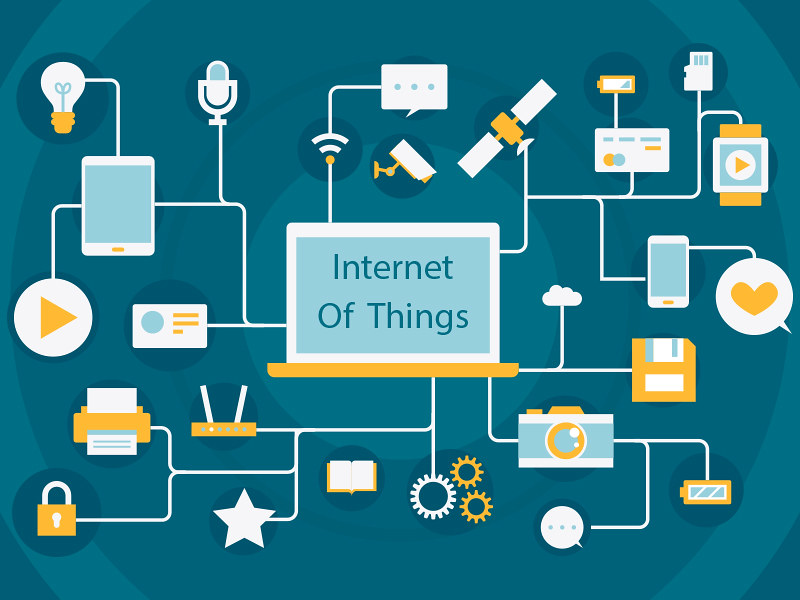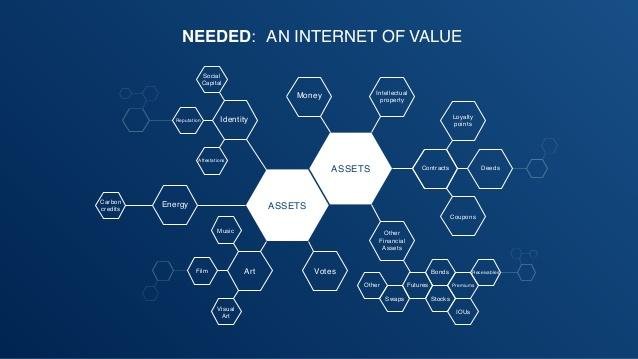We live in a connected world where everything and everyone is connected with the smart network of the internet called the Internet of Things (IoT). This giant network of interconnected things and people has transformed the world we know of into one gigantic information system. However, this new global connectivity has also brought some challenges in terms of exchange value. Well, we have to rely on powerful intermediaries to exchange things of value. We have Governments, banks and other digital platforms that do the work for us, helping us with our transactions and everything else that is of monetary value. But the problem is they all use centralized servers, which can be hacked. This is where “Internet of Value” comes to the picture. It is a new digital medium for value that ensures the safety and security of our exchanges online. But what is it exactly? And how does it work?

What is Internet of Things (IoT)?
A few years back, the emergence of the Internet of Things (IoT) was considered with a certain degree of skepticism. Those days are gone now. The IoT is now a worldwide phenomenon that is extending the power of the internet beyond the conventional use of computers to a range of computing and electronics devices. IoT is a vast global network infrastructure of interconnected devices and people that communicate over wireless networks. The IoT is the new internet that is not just about connecting people; it’s about connecting things, the things with the ability to sense, communicate, control and touch. A smartphone is probably one of the obvious examples of the Internet of Things. So, putting it in simple terms, IoT is a vast network of physical objects (or things) connected to the internet which allows them to communicate with each other. The IoT is a catchall term for all the things that are capable of sending and receiving instructions via the Internet.

What is Internet of Value?
Internet of Value is a global, distributed digital platform where money changes hands at the speed of information between peers without the need for intermediaries. It is a value exchange protocol that enables instant transfer of assets of monetary value as easily as data is transferred. As the web revolutionized the exchange and use of information based on the centralization of information, the Internet of Value, underpinned by blockchain, is meant to change the landscape of anything that holds monetary value, including stocks, assets, properties, currency, and so on. This is based on the idea that we cannot have global value exchange without some sort of digital, universally accepted digital currency. That is why cryptocurrency is so fundamental to the digital transformation we are seeing today. The Internet of Value is actually a concept proposed by Ripple that aims to simplify value transactions as information moves around the world instantly.
Difference between Internet of Things and Internet of Value
Meaning
– The Internet of Things (IoT) is a catchall term for all the things or devices that are connected to the Internet and are capable of sending and receiving instructions. The IoT is a global network of billions of interconnected devices that are able to collect or exchange data over a wireless network. The Internet of Value is an online space that enables instant transfer of assets of monetary value between peers over the internet without the need for third-party intermediaries.
Focus
– The IoT refers to the network of physical objects that are embedded with sensors, software, electronics components and other technologies which allow them to communicate and exchange data with each other. So, IoT focuses on things, devices and new technologies. The Internet of Value, on the other hand, focuses on anything that holds monetary value in the internet. It represents the next phase of digital transformation that aims to disrupt the finance sector by minimizing the power of banks.
Applications
– Cryptocurrency is the manifestation of what is needed to support Internet of Value. Blockchain technology supports this vision of money without governance. What the web does for the exchange of information, the blockchain does for the exchange of value. The IoT is everywhere, from smart wearable and fitness trackers to smart home appliances, security systems, biometric scanners, smartphones, smart farming equipment, wireless internet, driverless cars, and so on. Almost everything that is connected to the Internet is an example of the Internet of Things.
Internet of Things vs. Internet of Value: Comparison Chart

Summary
The Internet of Things is based on an interoperable communication protocol where physical and virtual things have identities, virtual personalities, and are seamlessly integrated into the information network. The IoT extends the power of Internet into a global network of dynamically configured web of platforms for connected devices, things, and people. The Internet of Value is an ecosystem of anything that holds any monetary value for peers, such as stocks, bonds, currency, assets, and so on. The idea of Internet of Value is to revolutionize all forms of quantifiable value into a centralized system. And at the heart of this value proposition is blockchain – a digital ecosystem that facilitates access to value transfer without governance.
- Difference Between Caucus and Primary - June 18, 2024
- Difference Between PPO and POS - May 30, 2024
- Difference Between RFID and NFC - May 28, 2024

